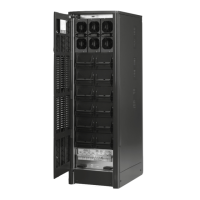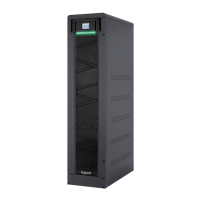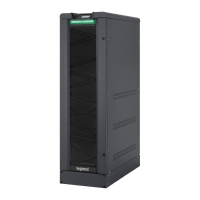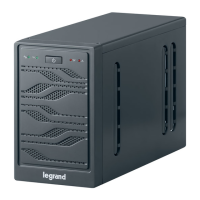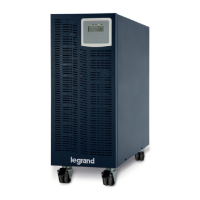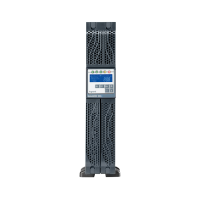Do you have a question about the LEGRAND Trimod 20 kVA and is the answer not in the manual?
General warnings and guidance on using the equipment as specified.
Explains graphical symbols used in the manual (Warning, Attention, Indication).
Defines roles and responsibilities for operating and maintaining the UPS.
Lists qualifications and typical activities for an operator.
Outlines qualifications and responsibilities for specialized technicians.
Details essential personal protective equipment (PPE) for safe operation.
Specifies the types of protective gear to be worn (footwear, gloves, etc.).
Explains workplace safety signs like electric current, emergency, and no smoking.
Discusses safety plates on the equipment and their importance.
Identifies residual risks and emphasizes compliance with manual for safety.
Provides general safety warnings related to energy, installation, maintenance, and tools.
General information on emergency procedures and fire prevention.
Essential safety rules and regulations for UPS installation, emphasizing technician role.
Wiring diagrams for TN systems showing mains connection and backfeed protection.
Wiring diagrams for TT systems showing mains connection and backfeed protection.
General guidance and safety recommendations for electrical connections.
Critical safety checks before proceeding with installation and connections.
Pre-connection checks including voltage, earthing, and protection devices.
Final connection step: connecting the power supply cables safely.
Selecting output configuration (single/three-phase) via the display is mandatory.
Pre-start checks including breakers, wiring, input parameters, and bypass switches.
Continues the starting procedure with ON/OFF, status check, and final output switch.
Step-by-step procedure for safely shutting down the UPS unit.
Lists common alarms, their meanings, and potential causes for troubleshooting.
Steps to prepare the UPS for maintenance by enabling forced bypass mode.
Procedure for adding or replacing power modules and battery boxes.
Step-by-step guide for safely replacing a power module.
Steps to safely restart the UPS and exit maintenance bypass mode.
Procedures for installing/replacing battery drawers and updating KB count.
| Apparent power | 20 kVA |
|---|---|
| Active power | 18 kW |
| Frequency | 50/60 Hz |
| Battery Type | Valve Regulated Lead Acid (VRLA) |
| Technology | Double conversion online |
| Communication Interface | RS232, USB |
| Operating Temperature | 0°C to 40°C |
